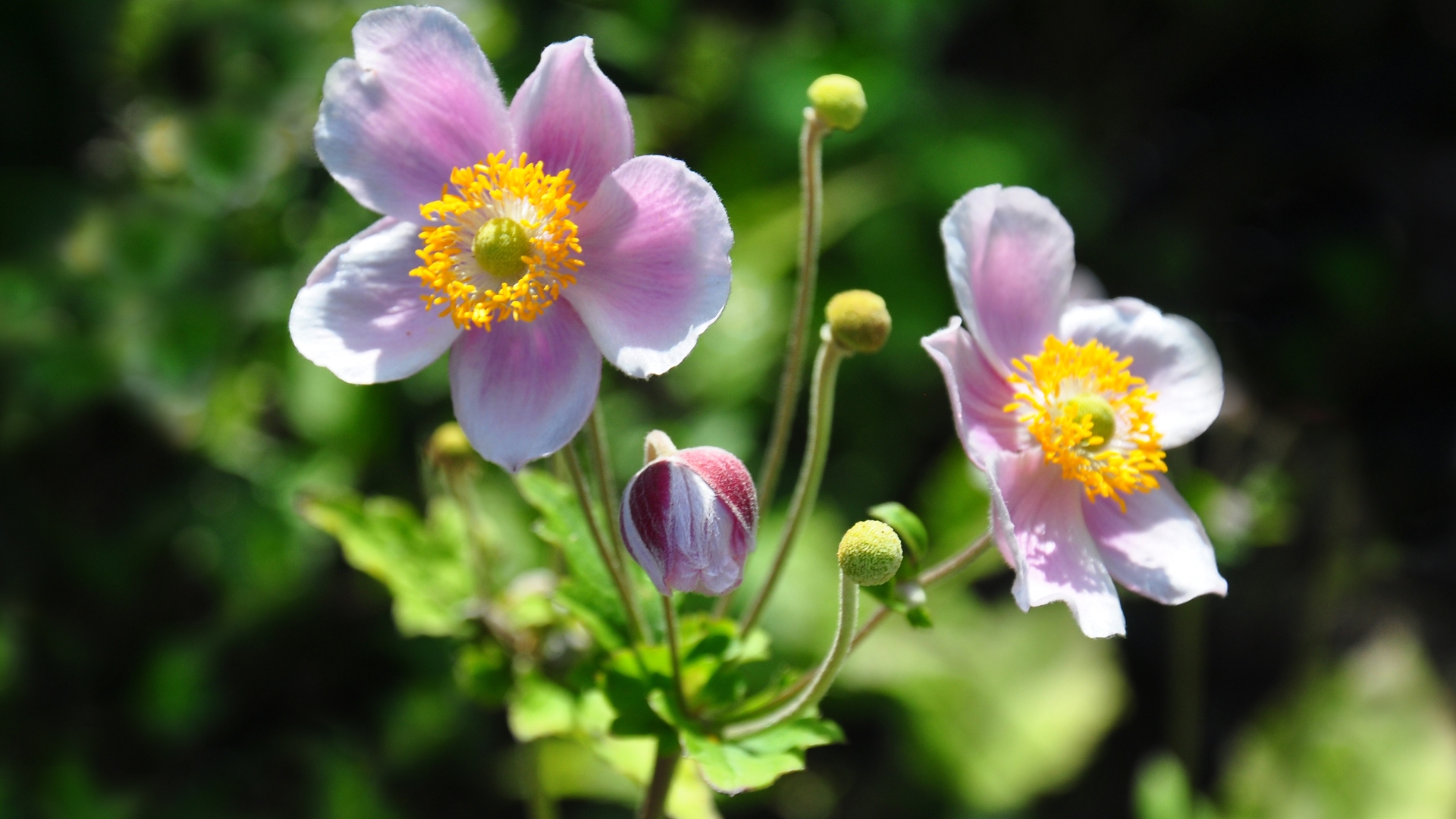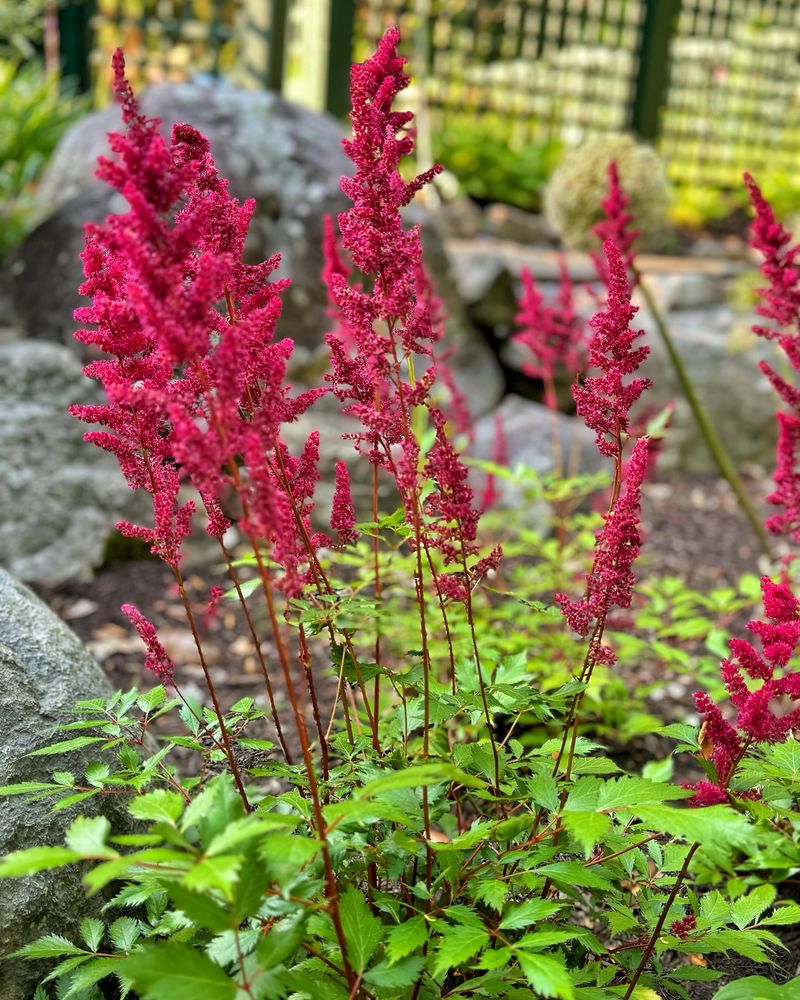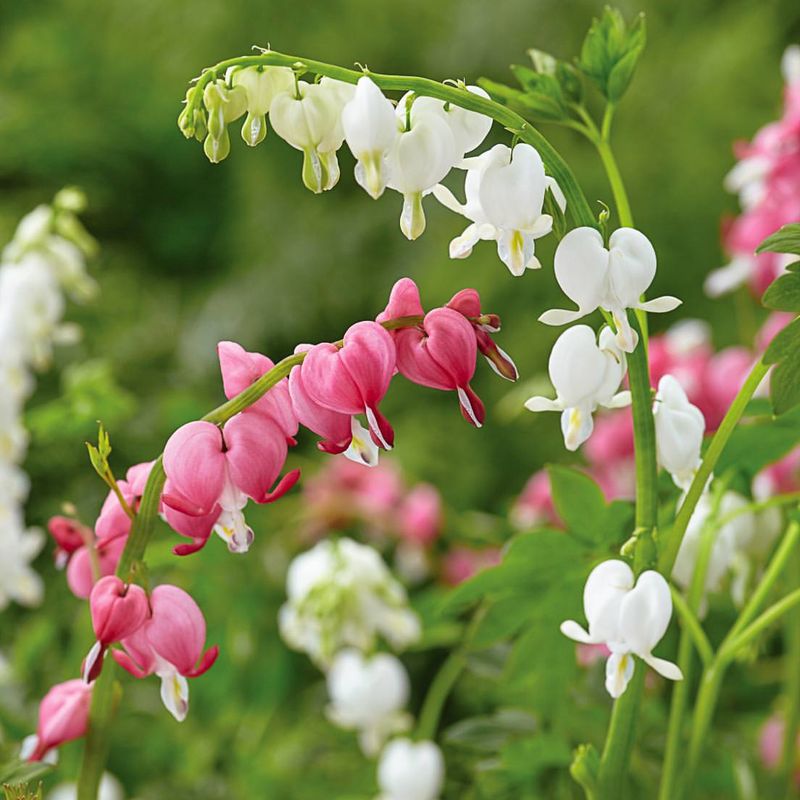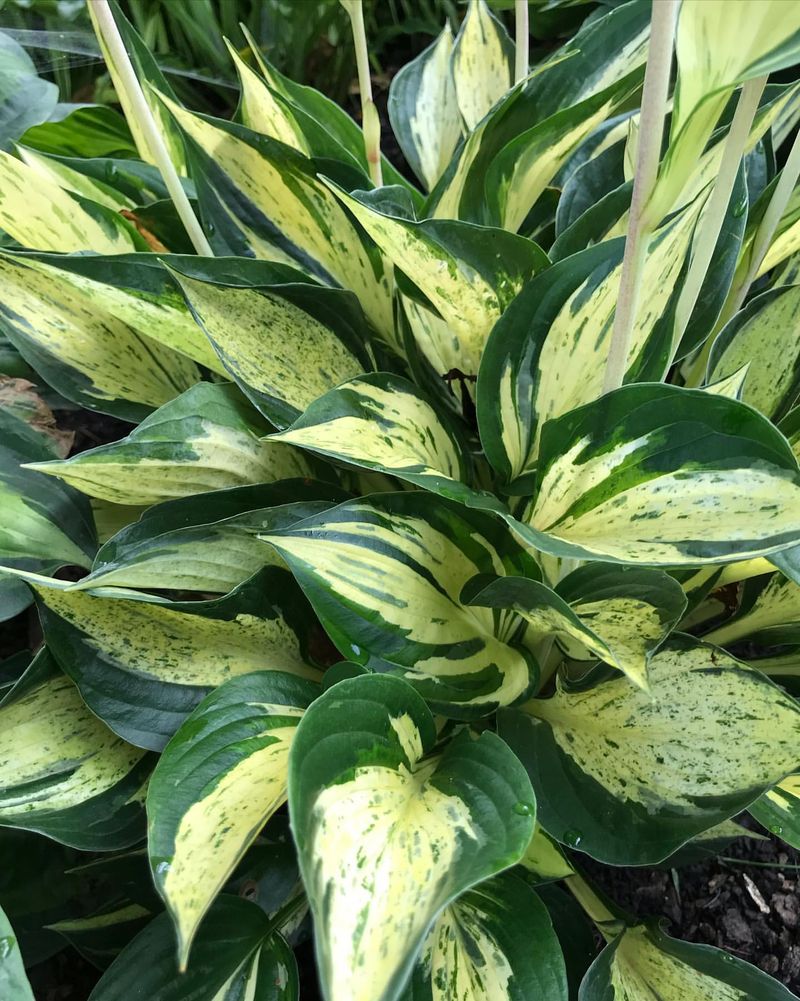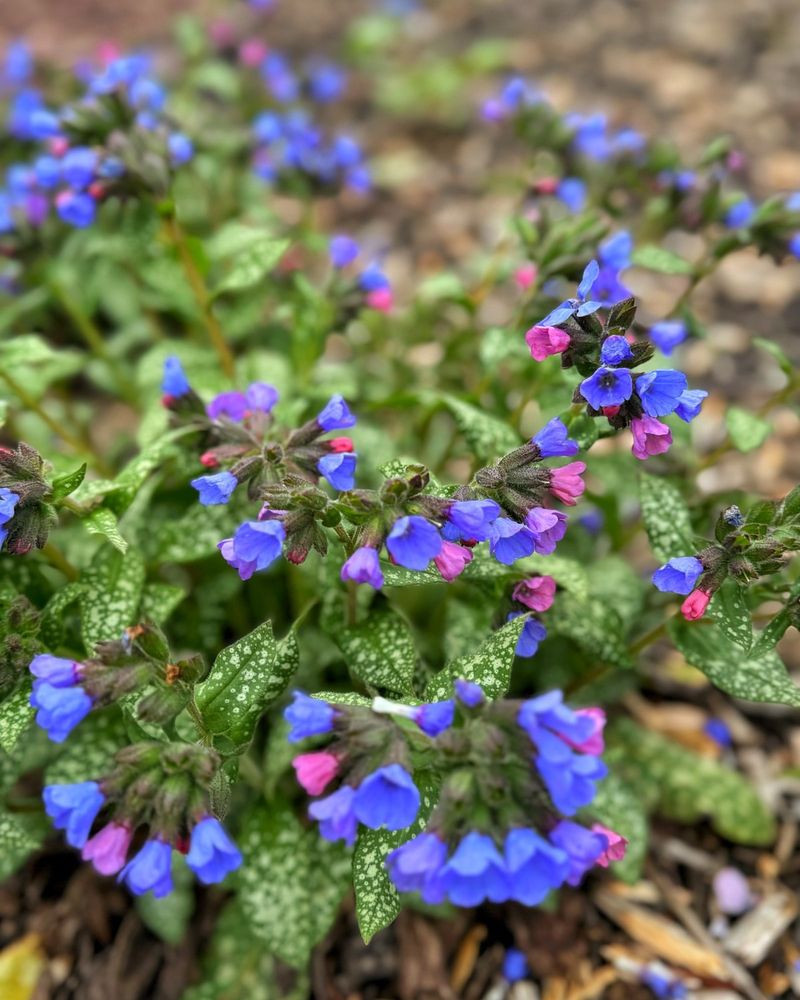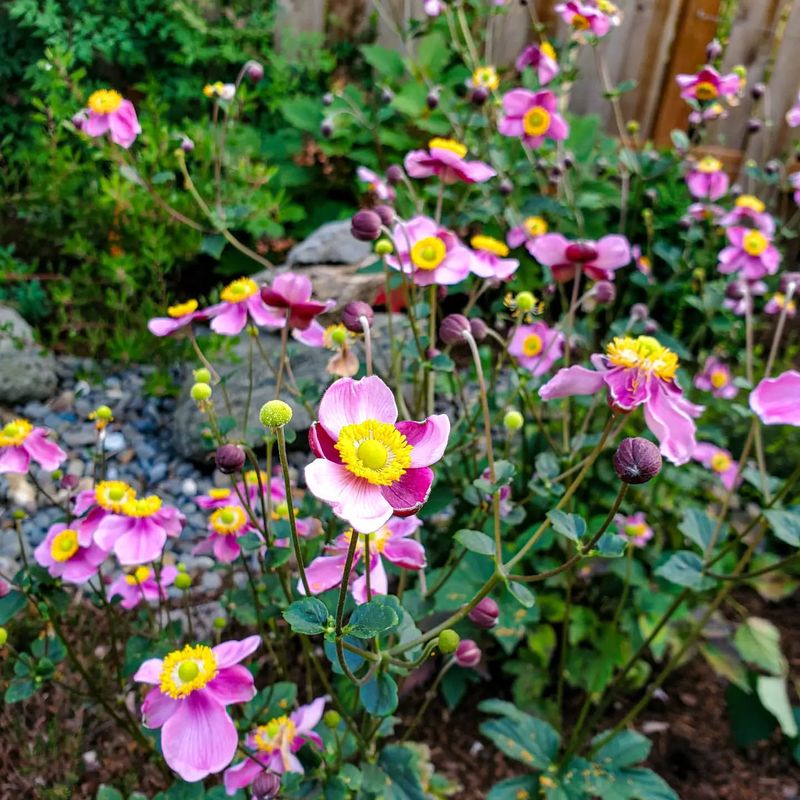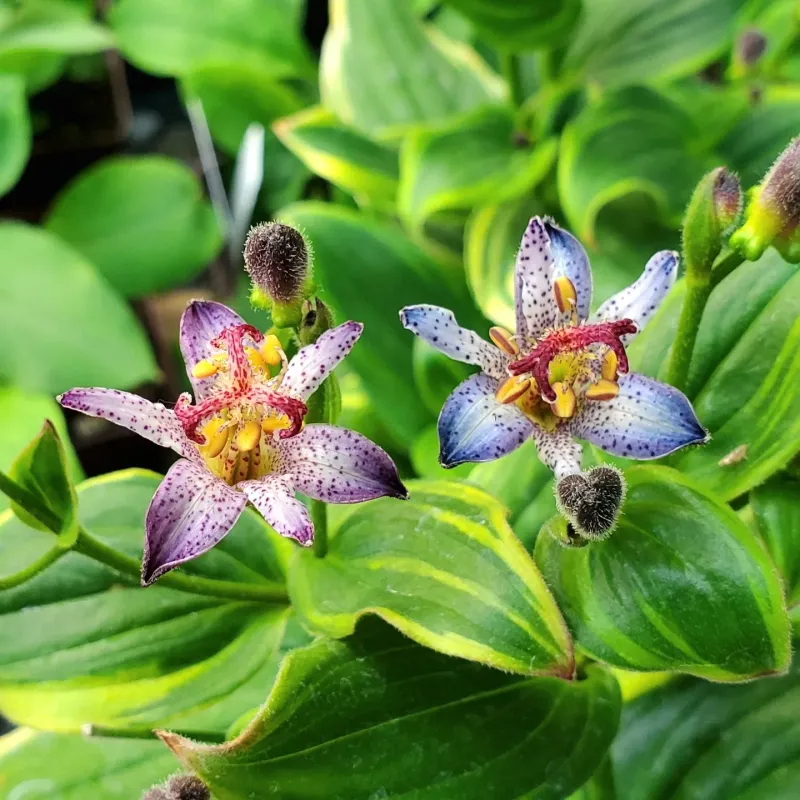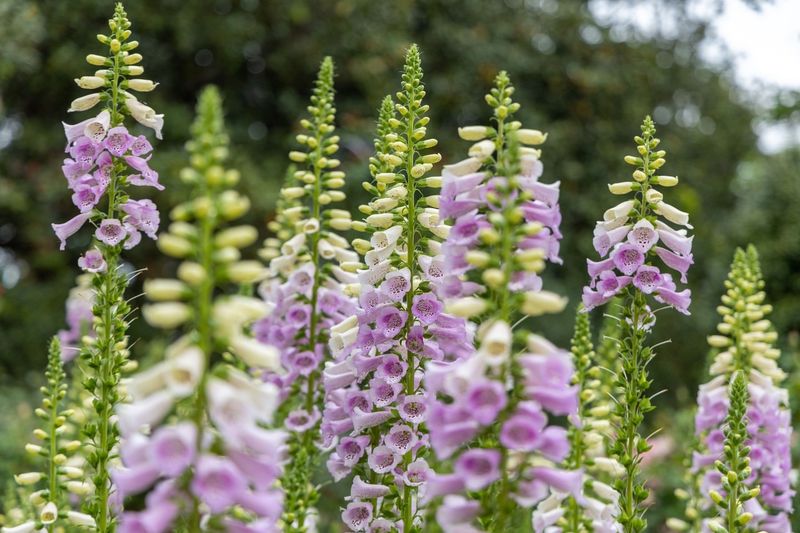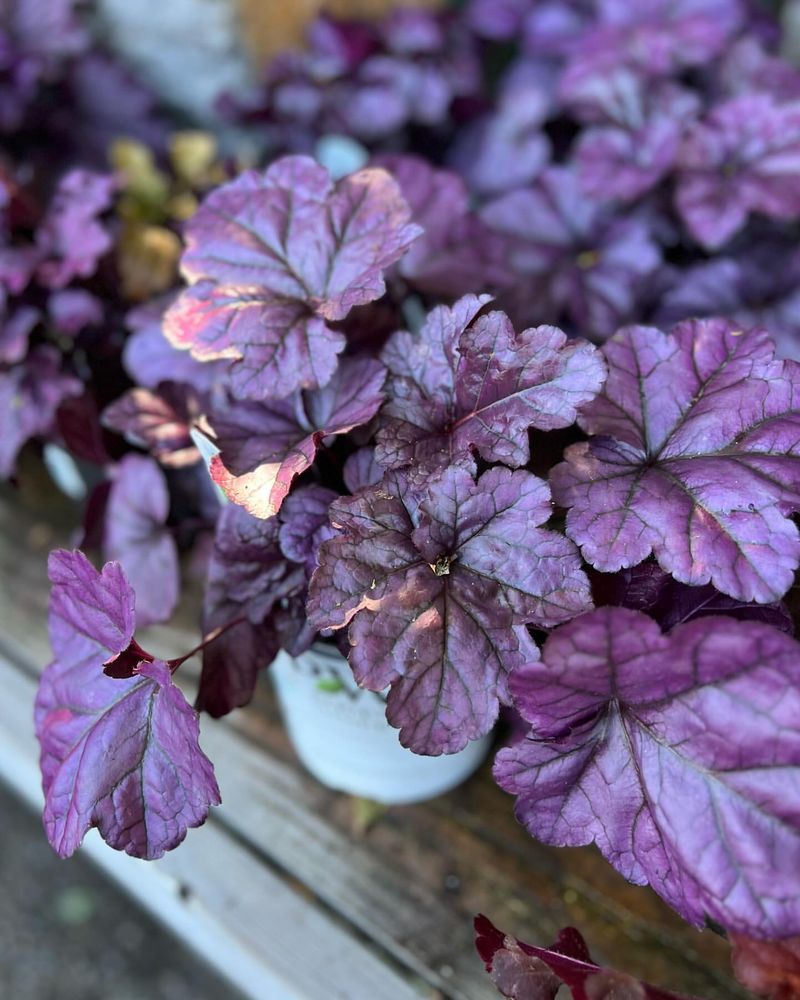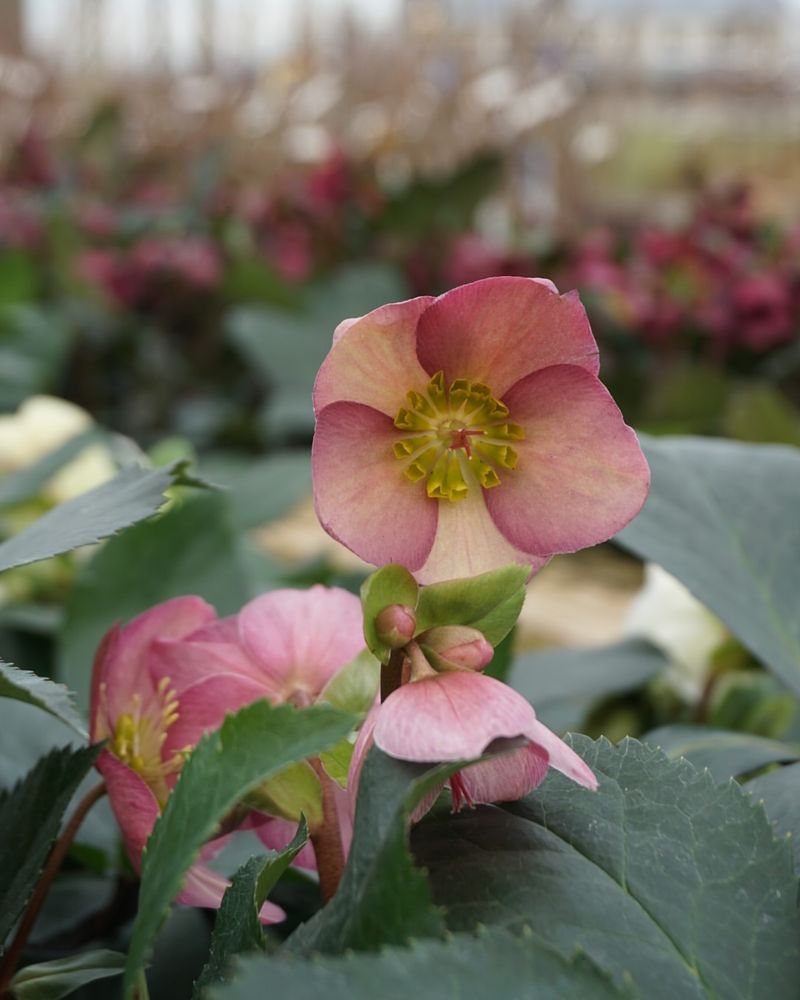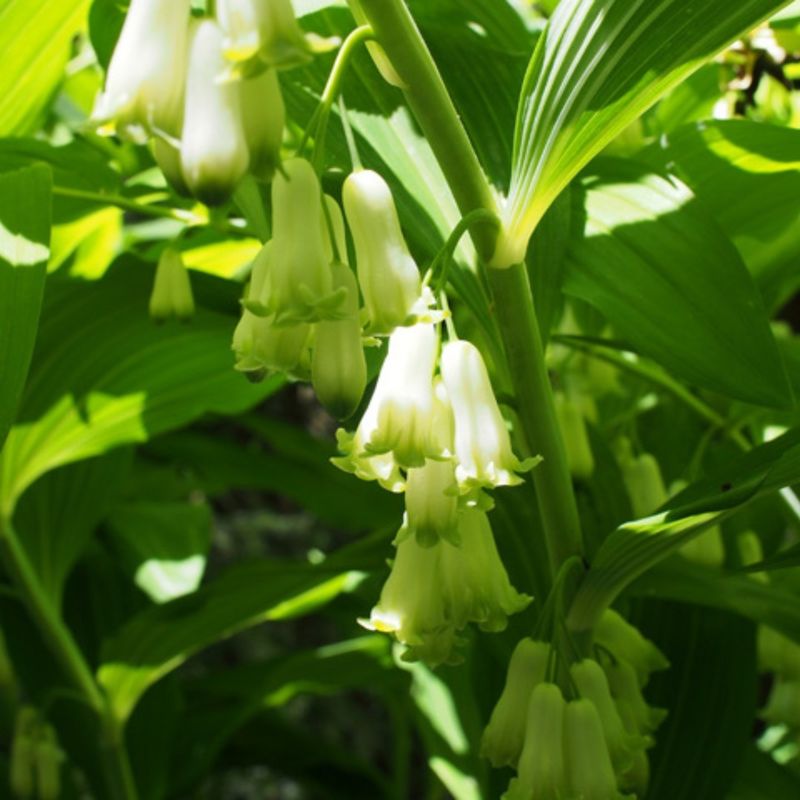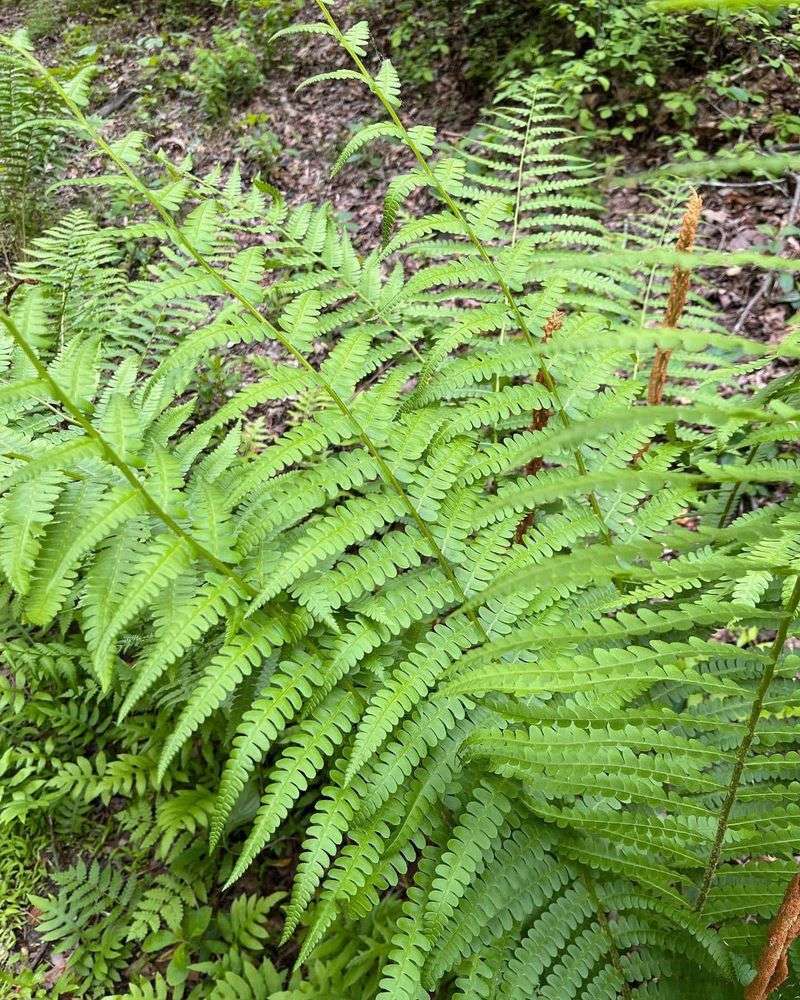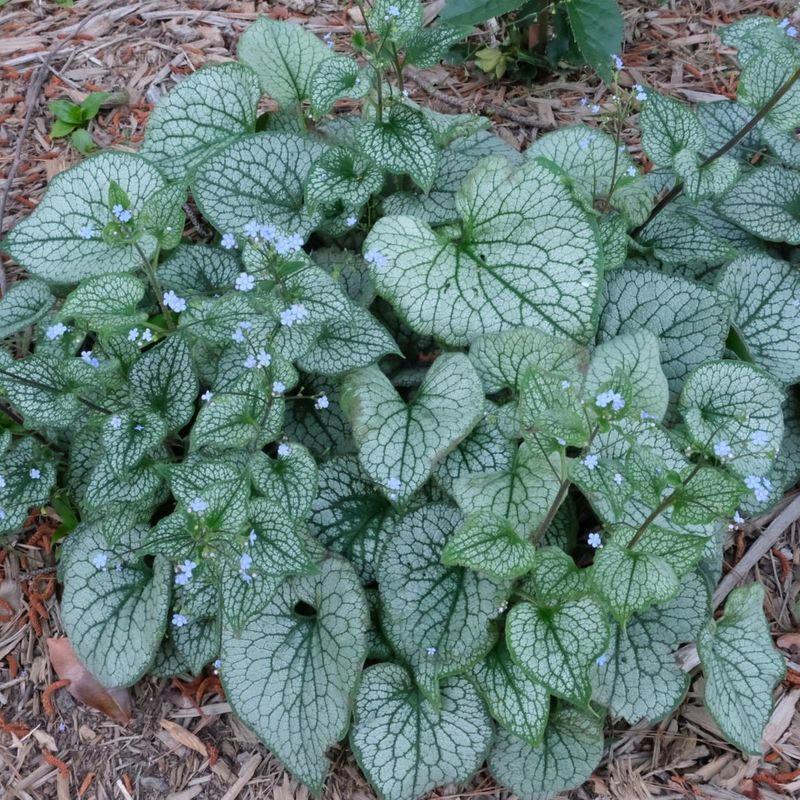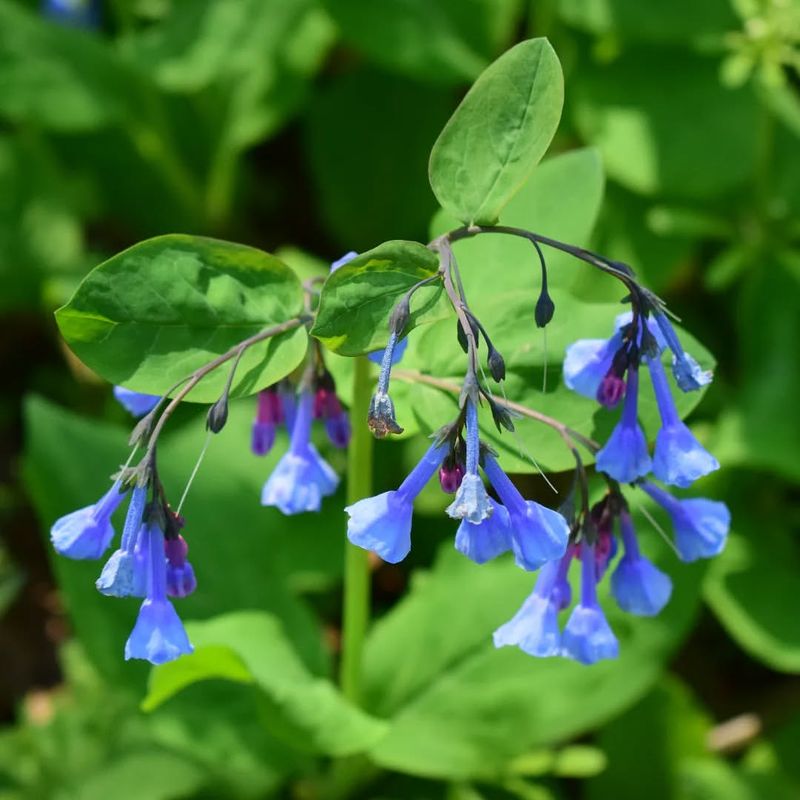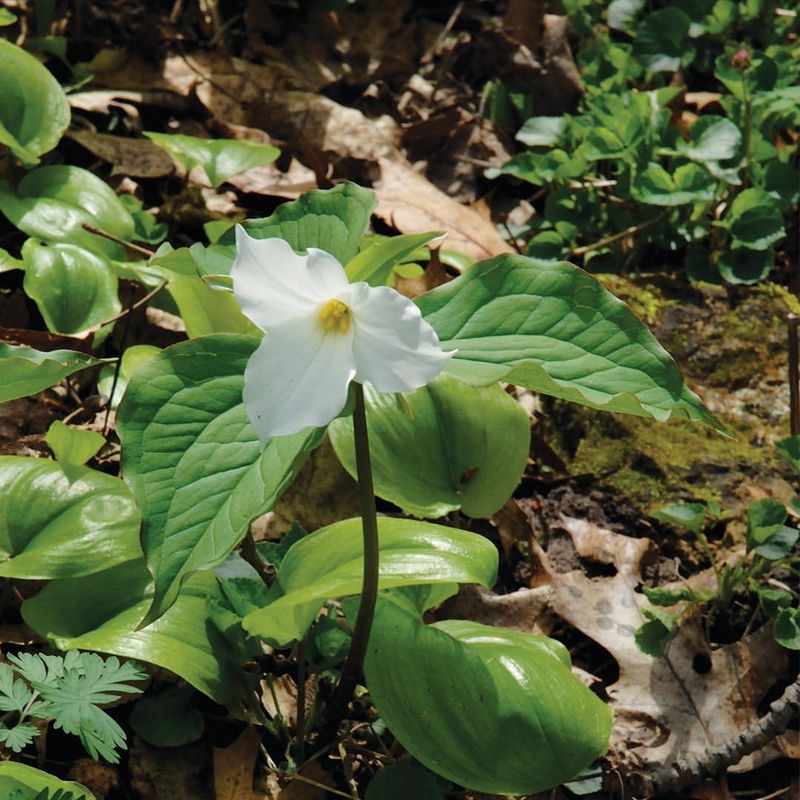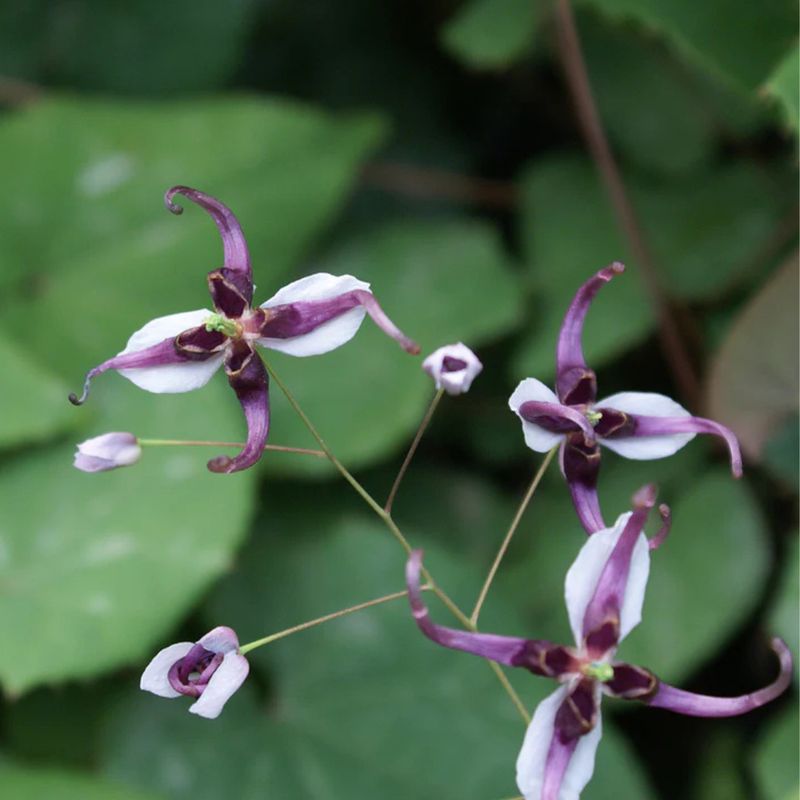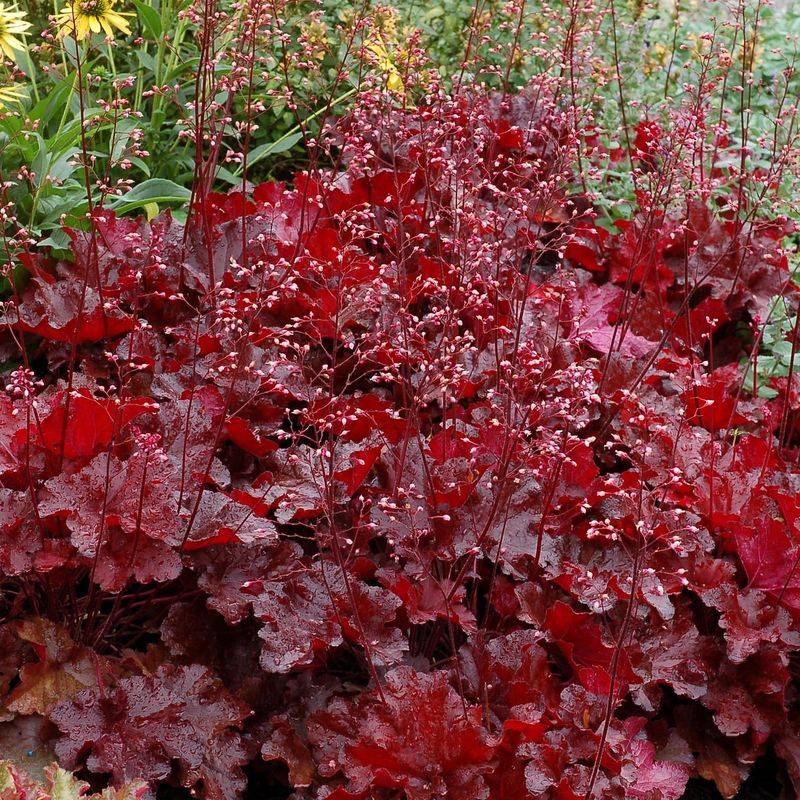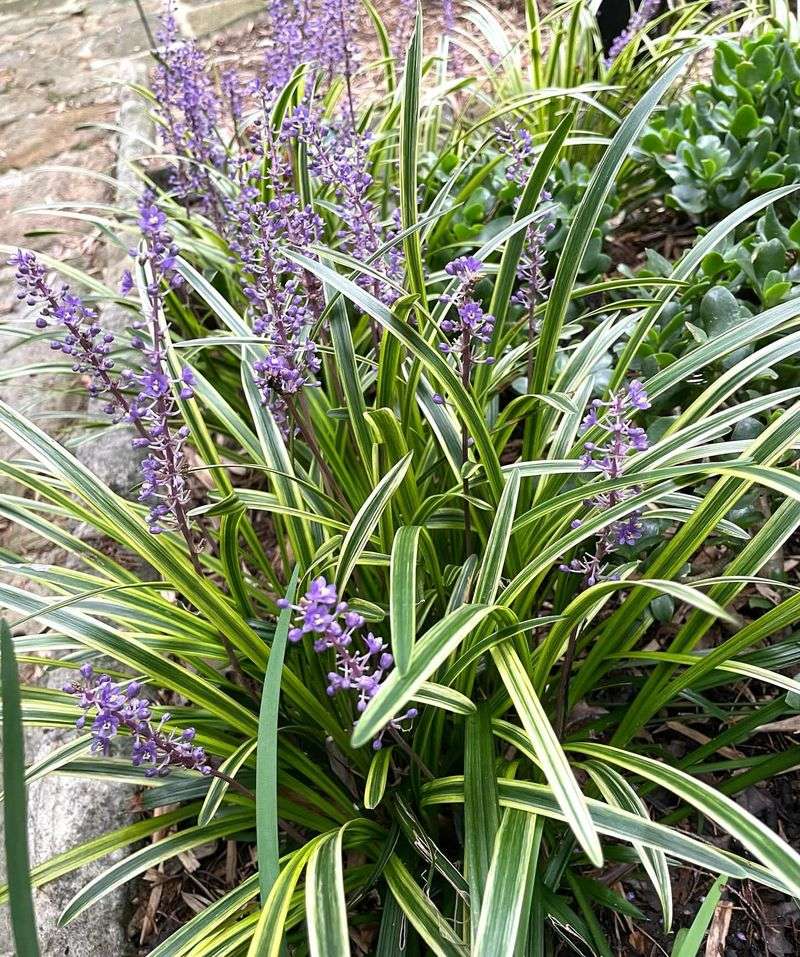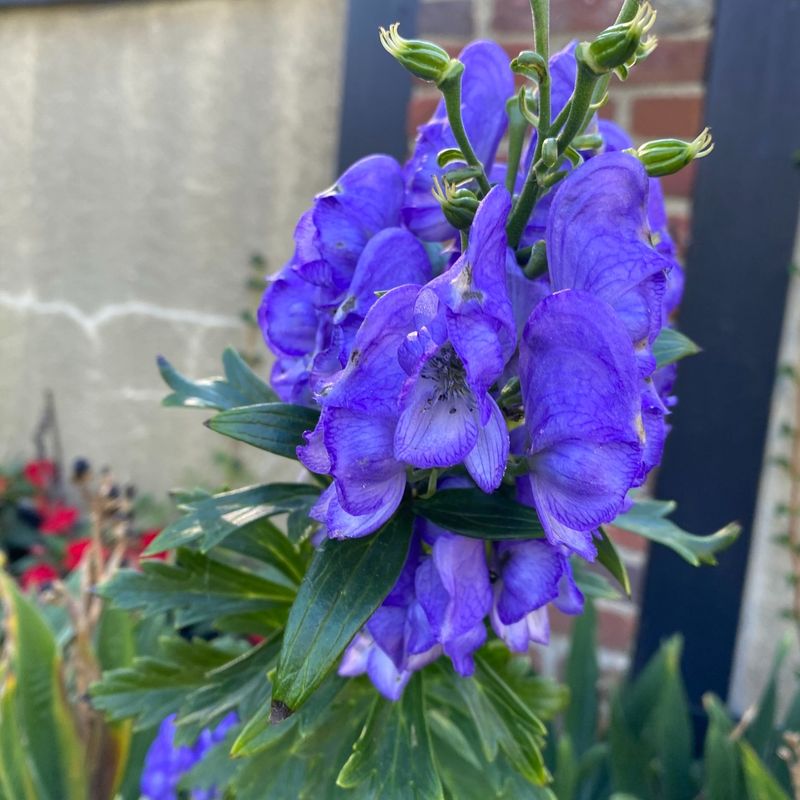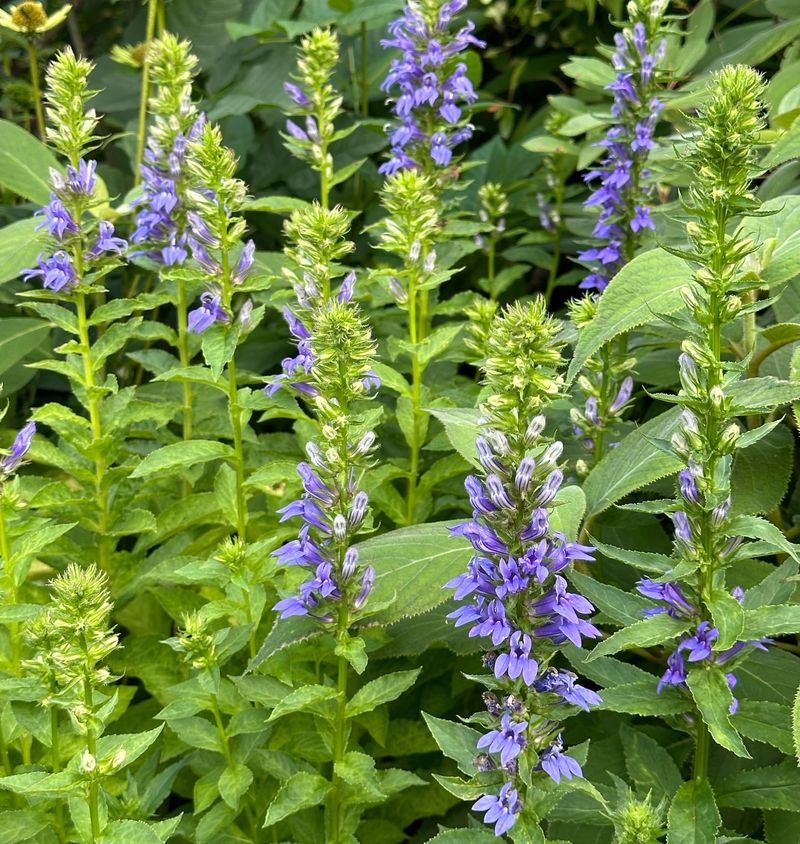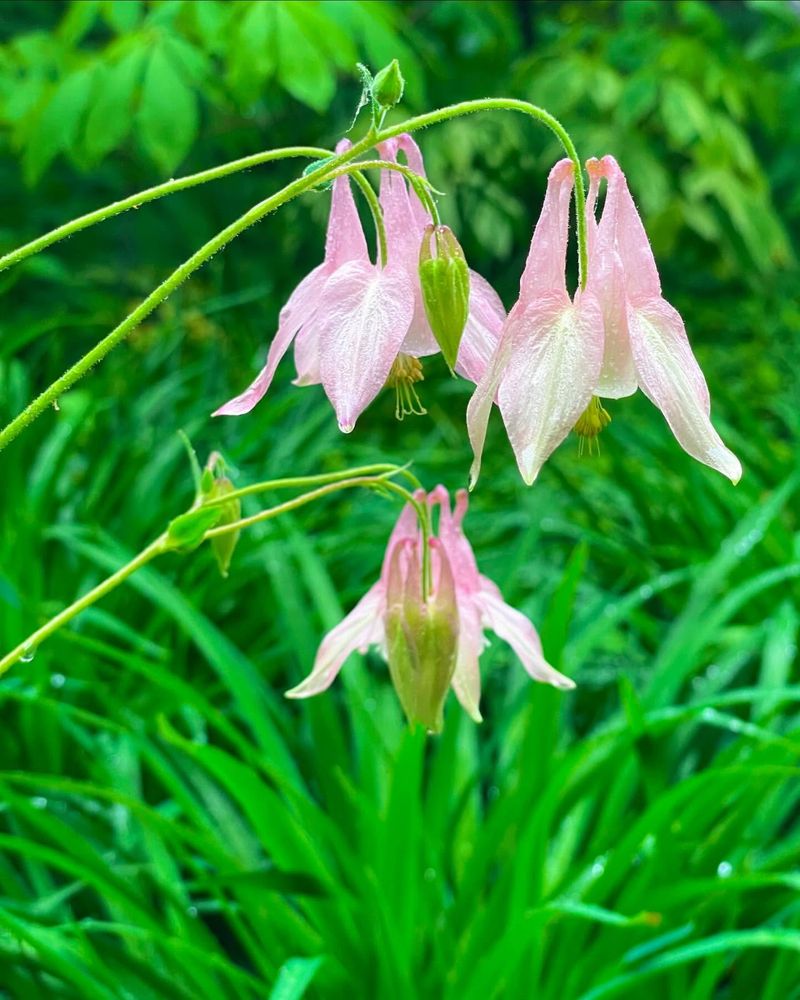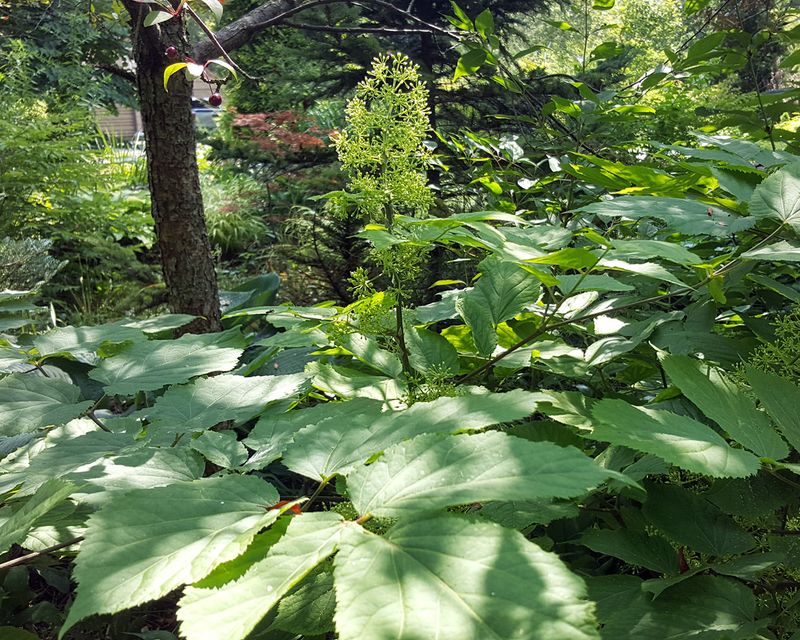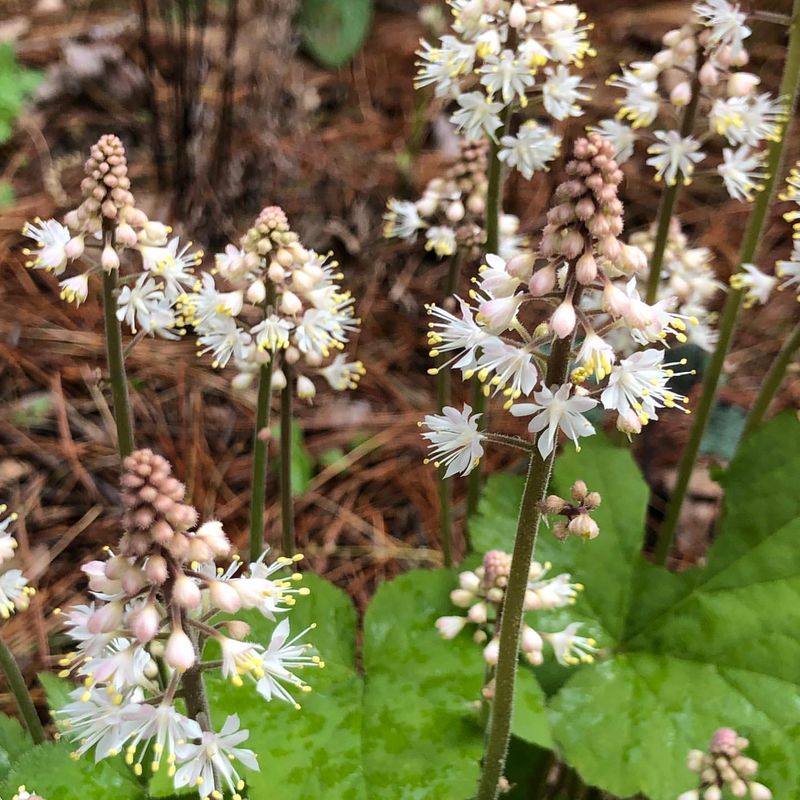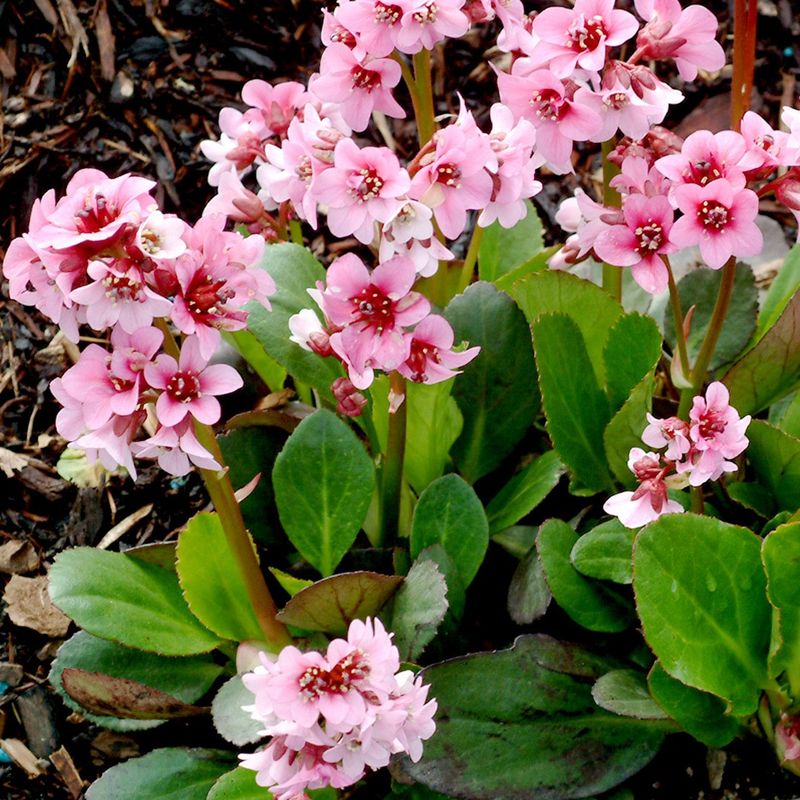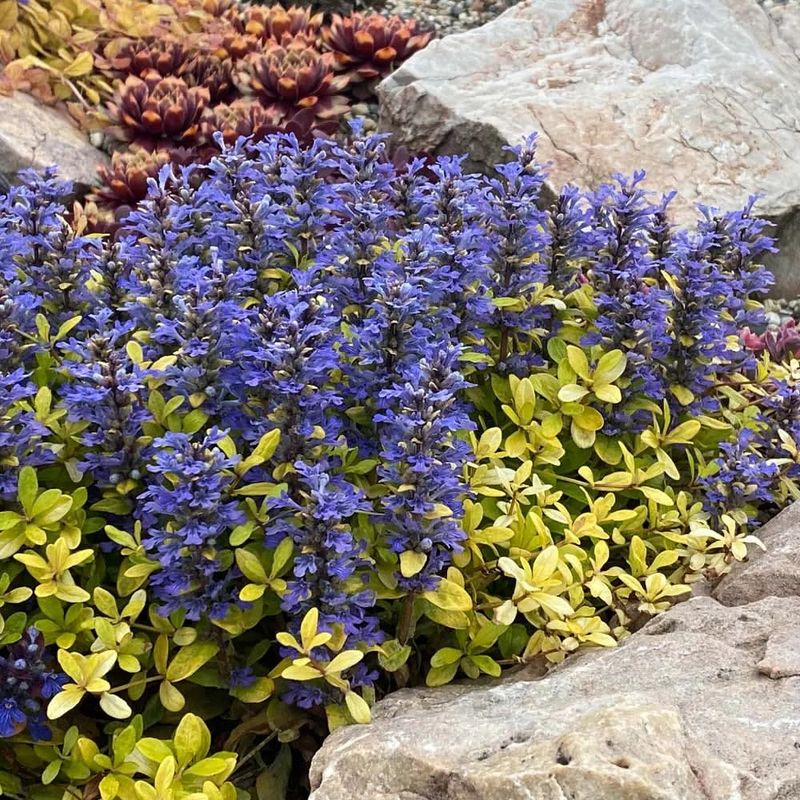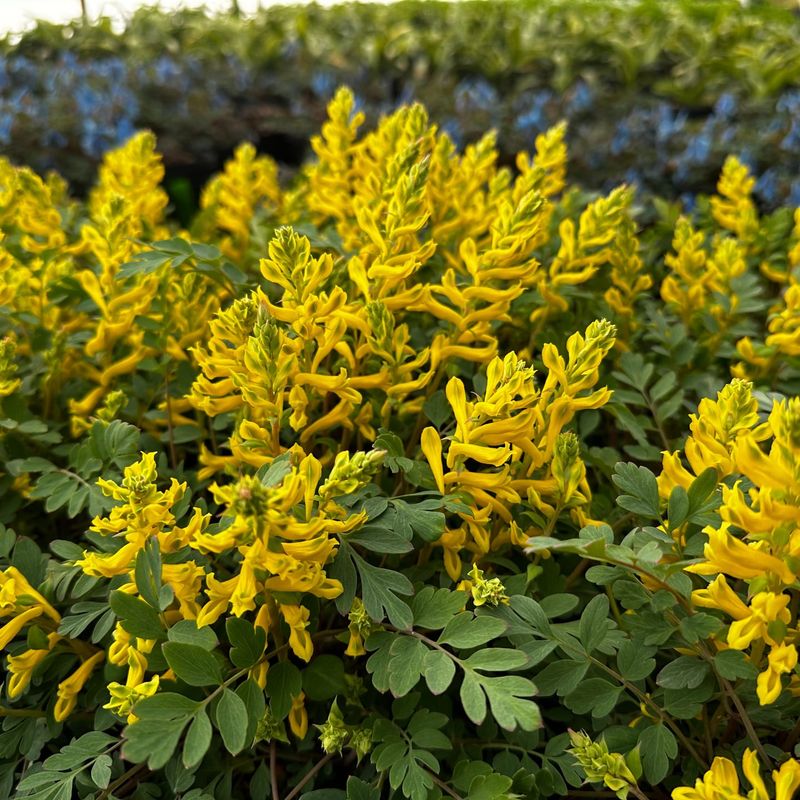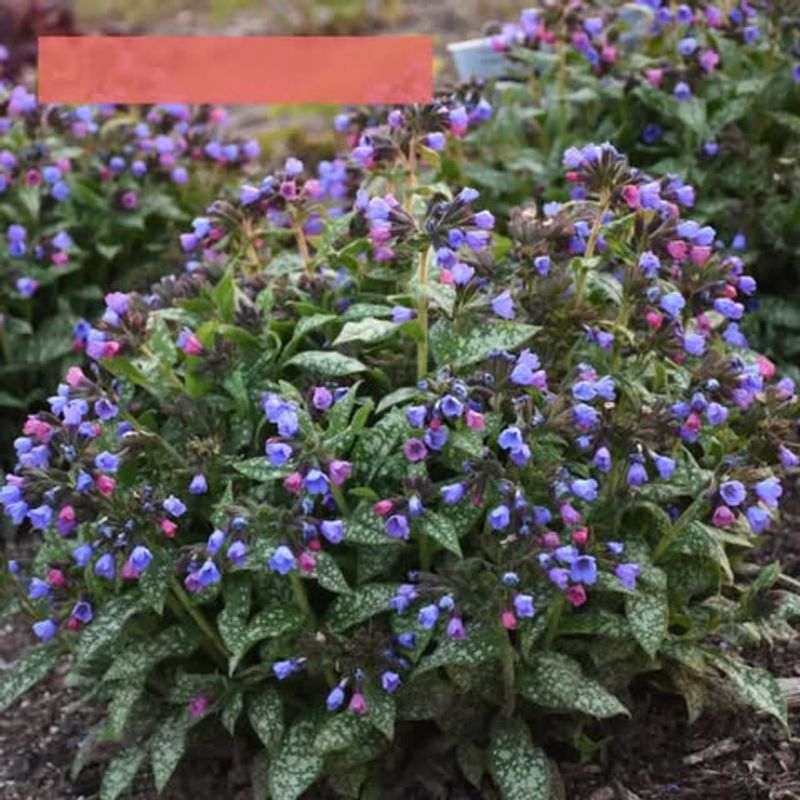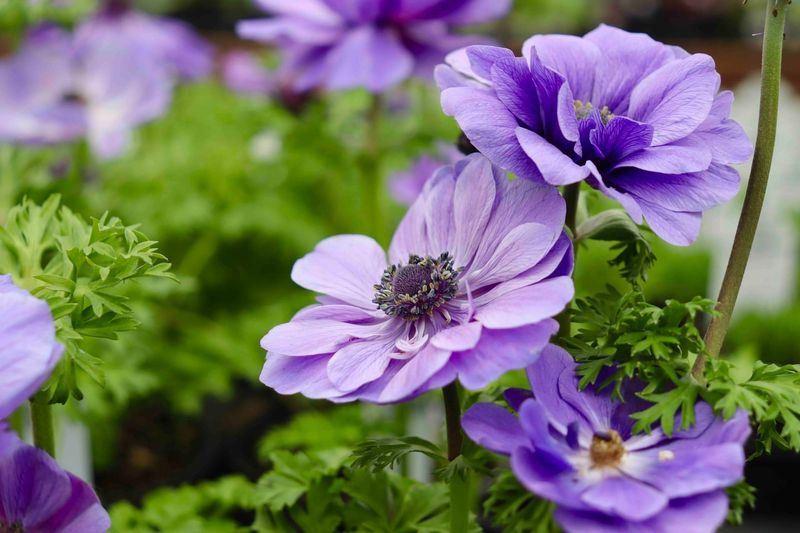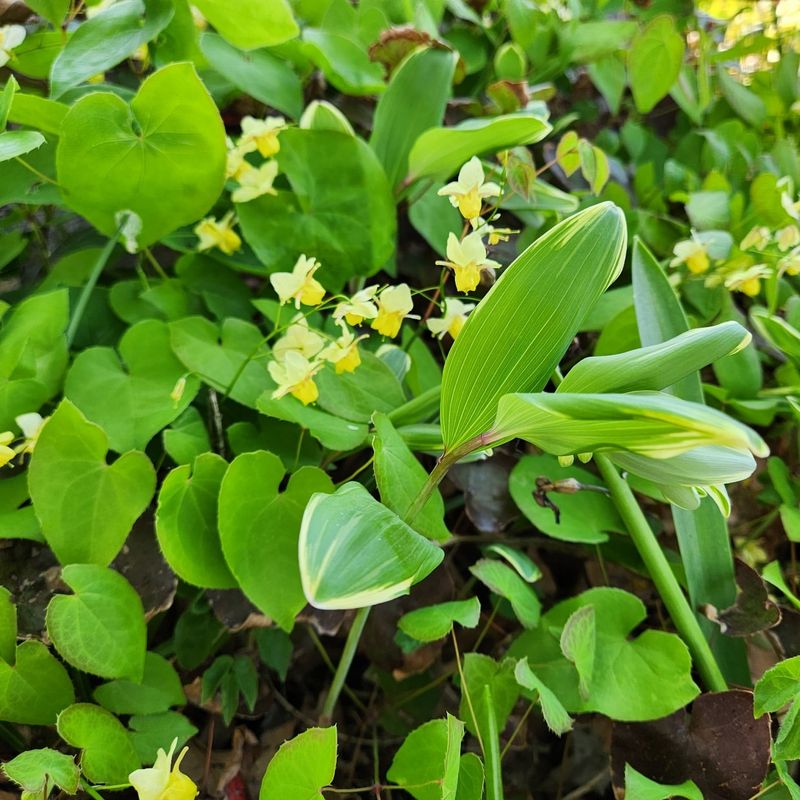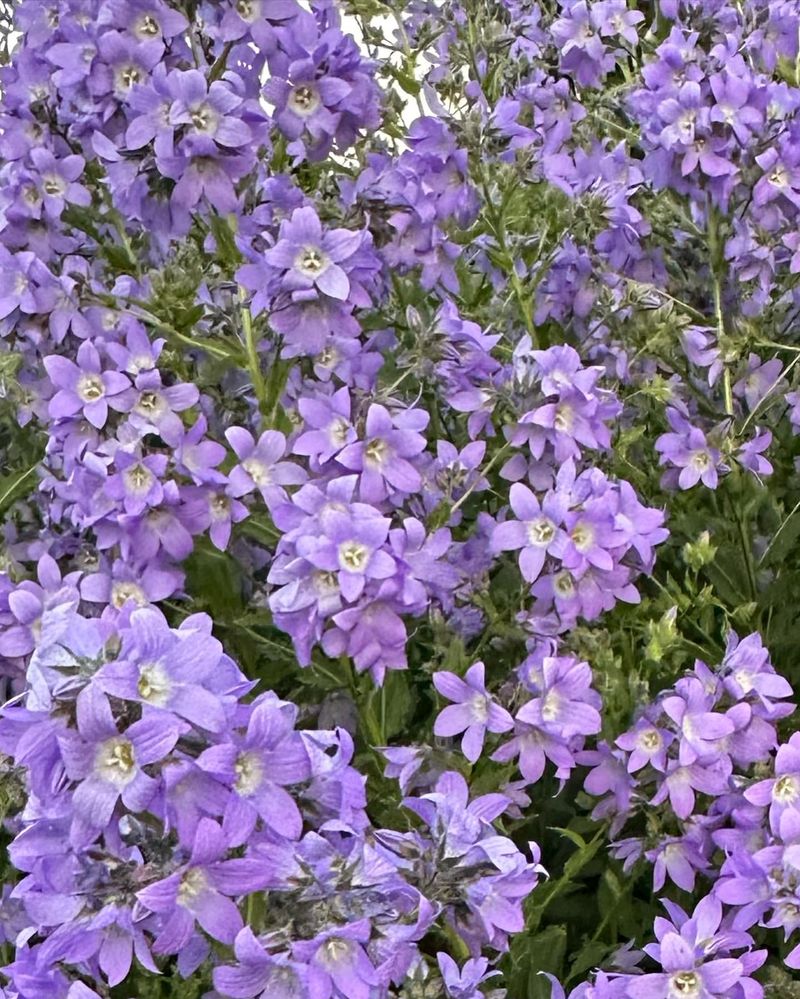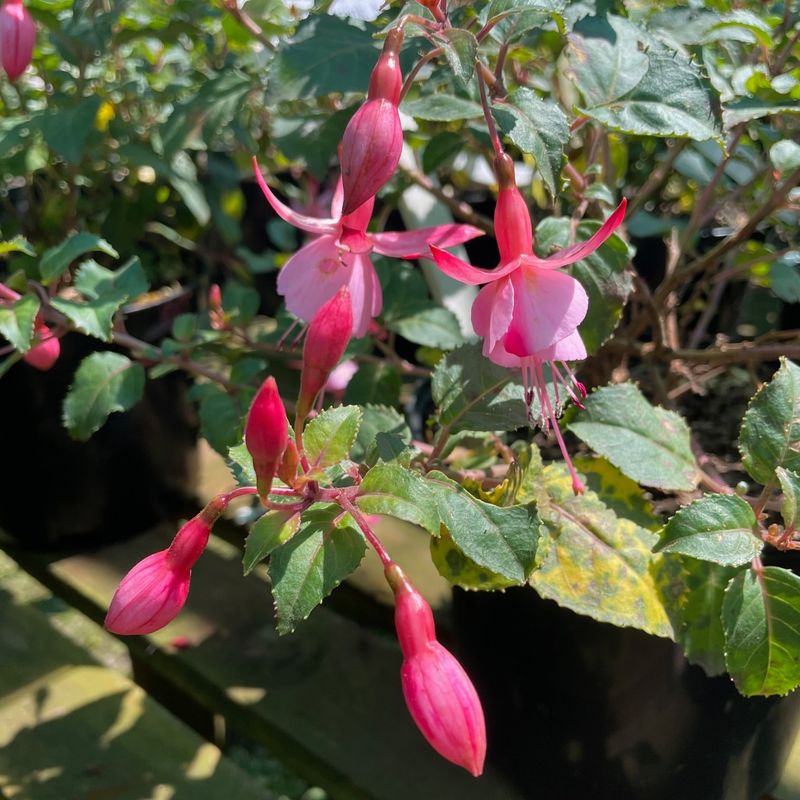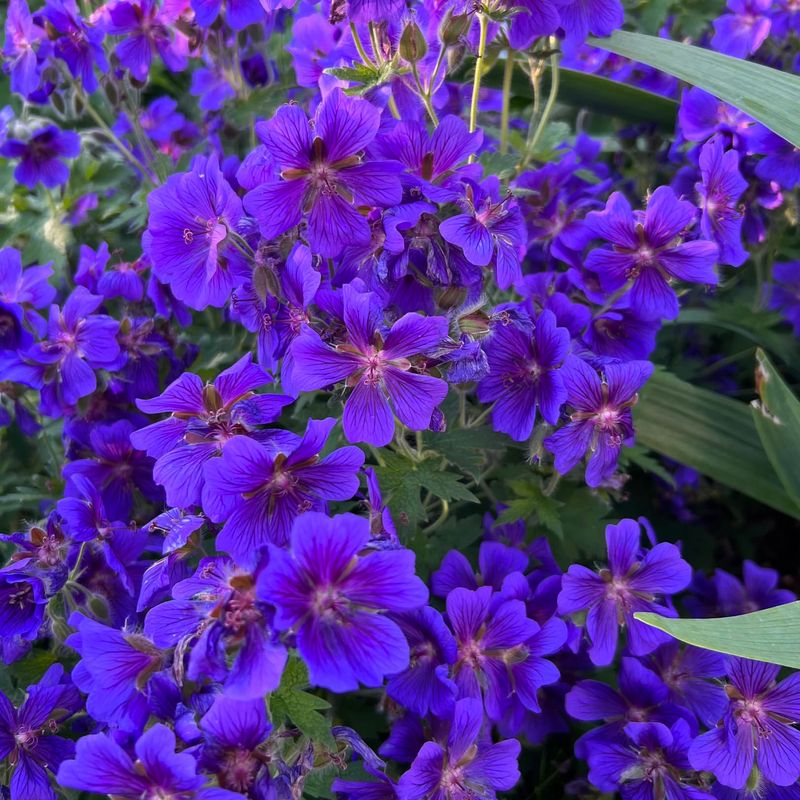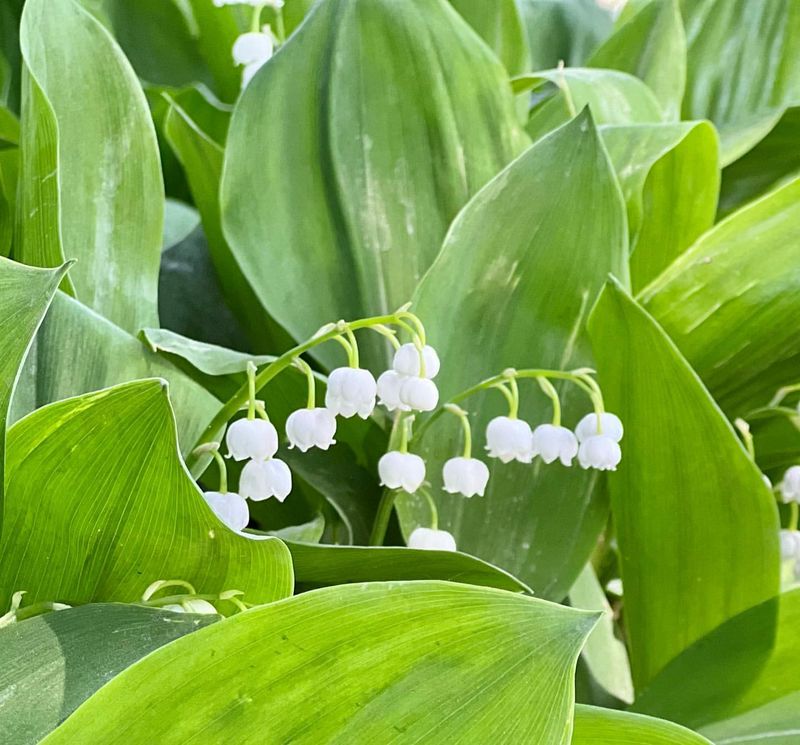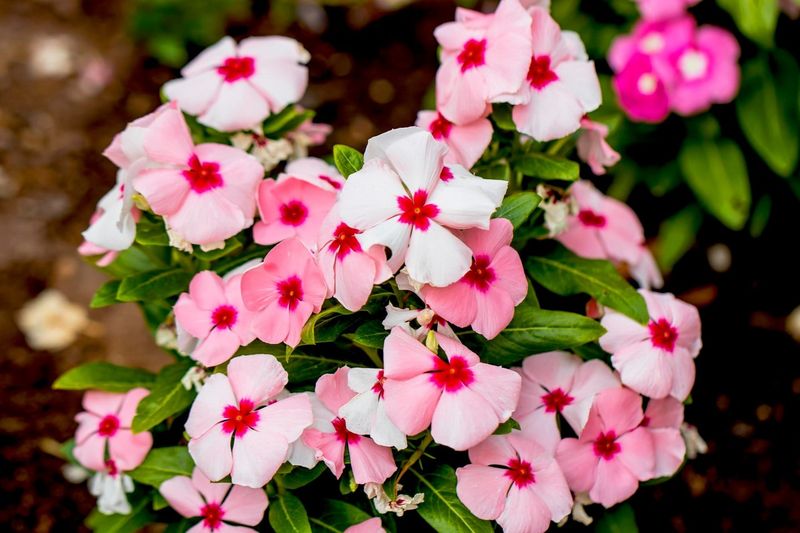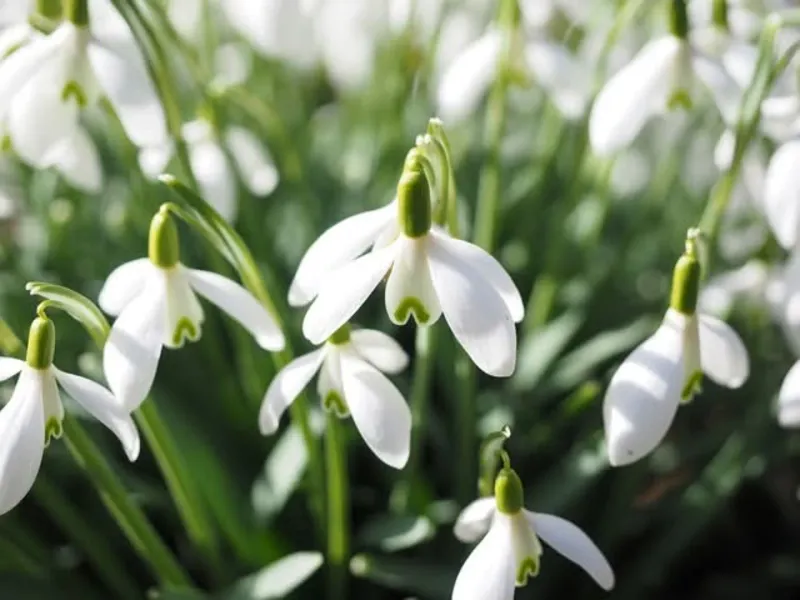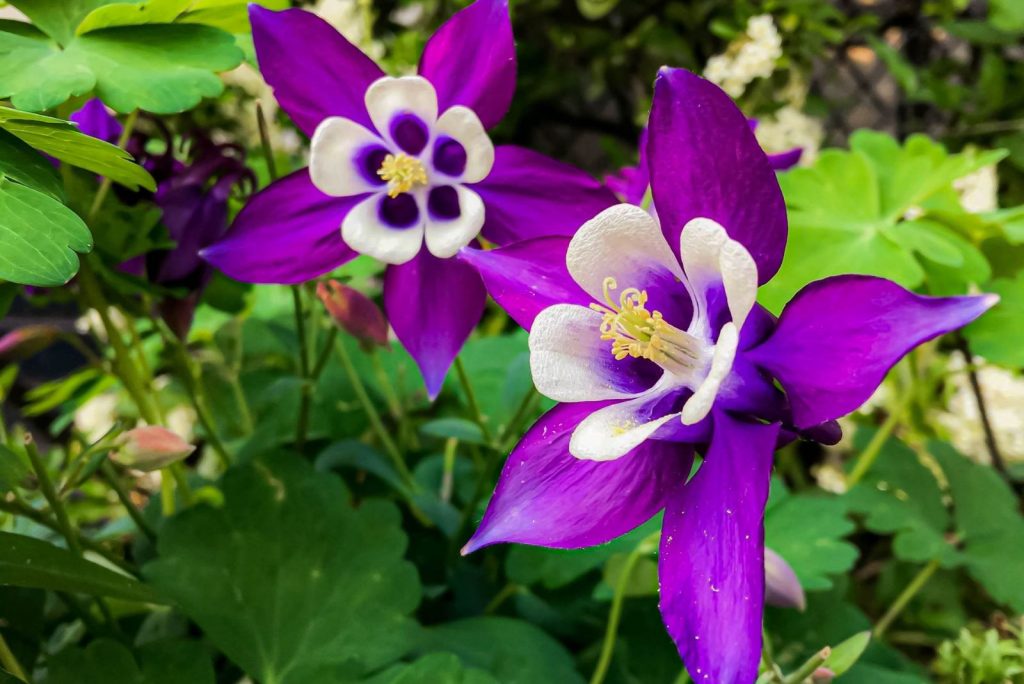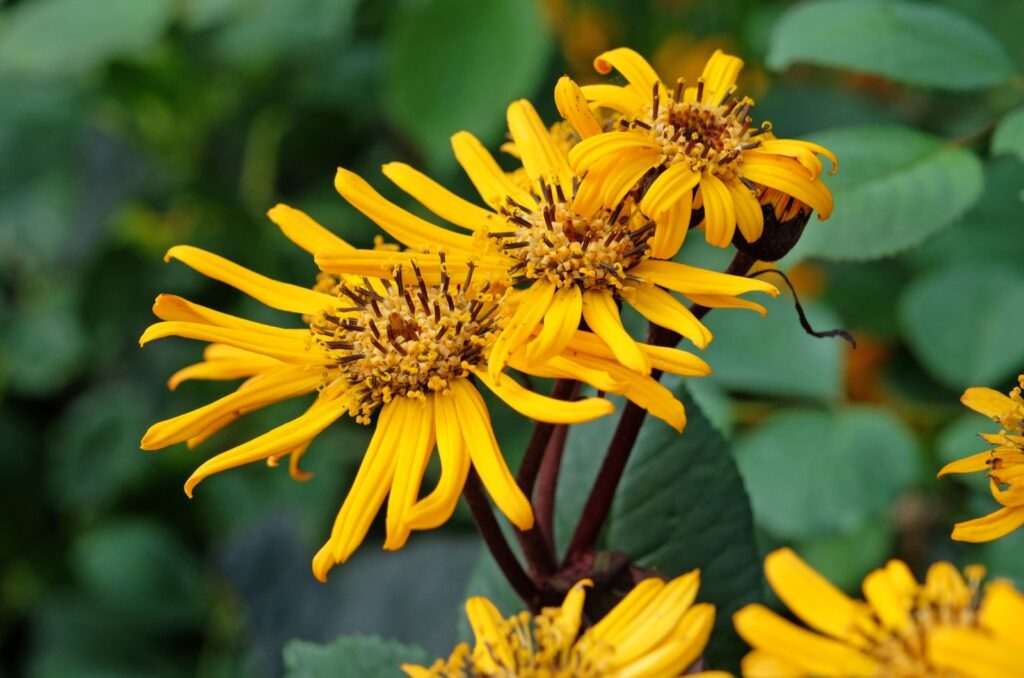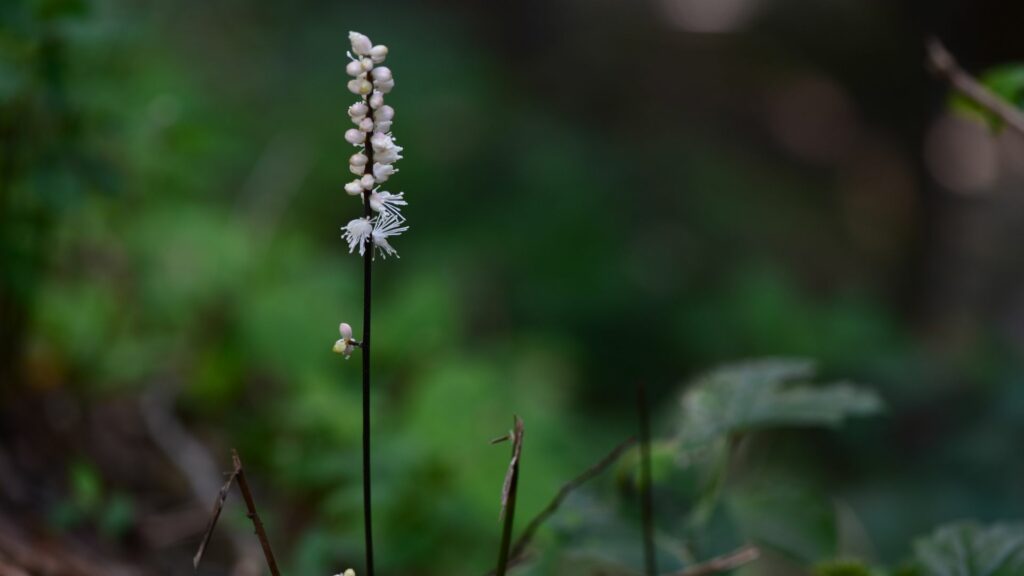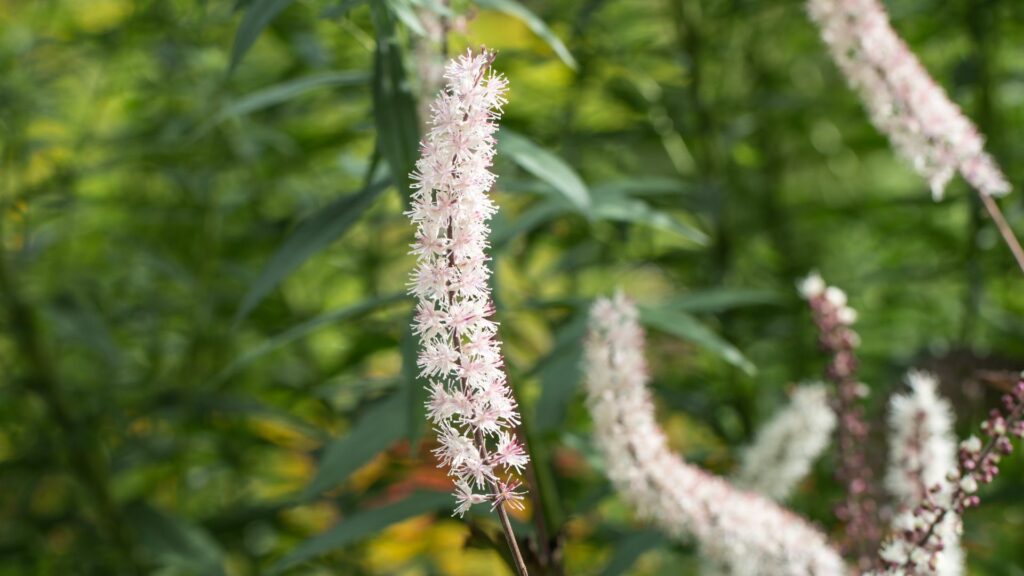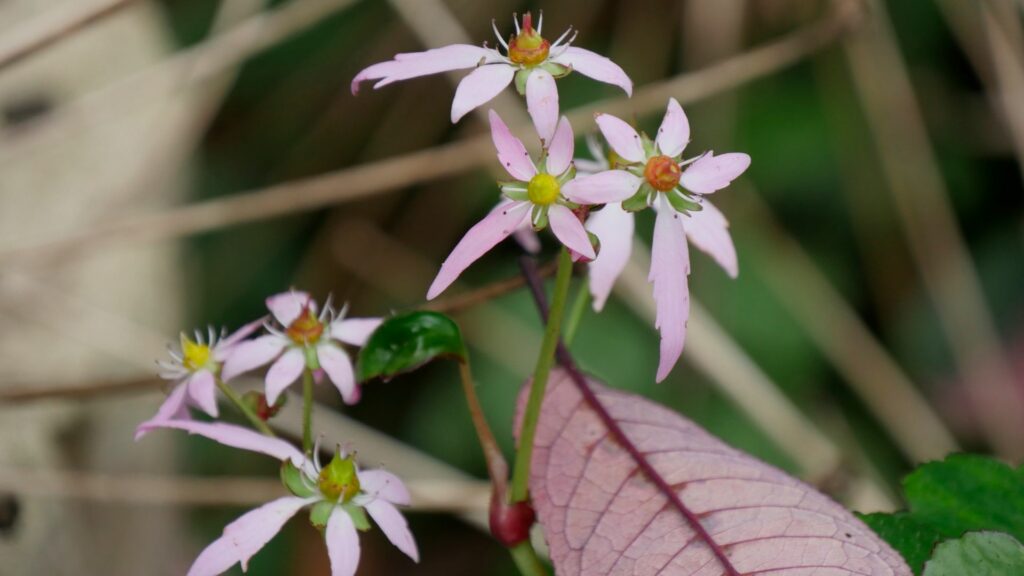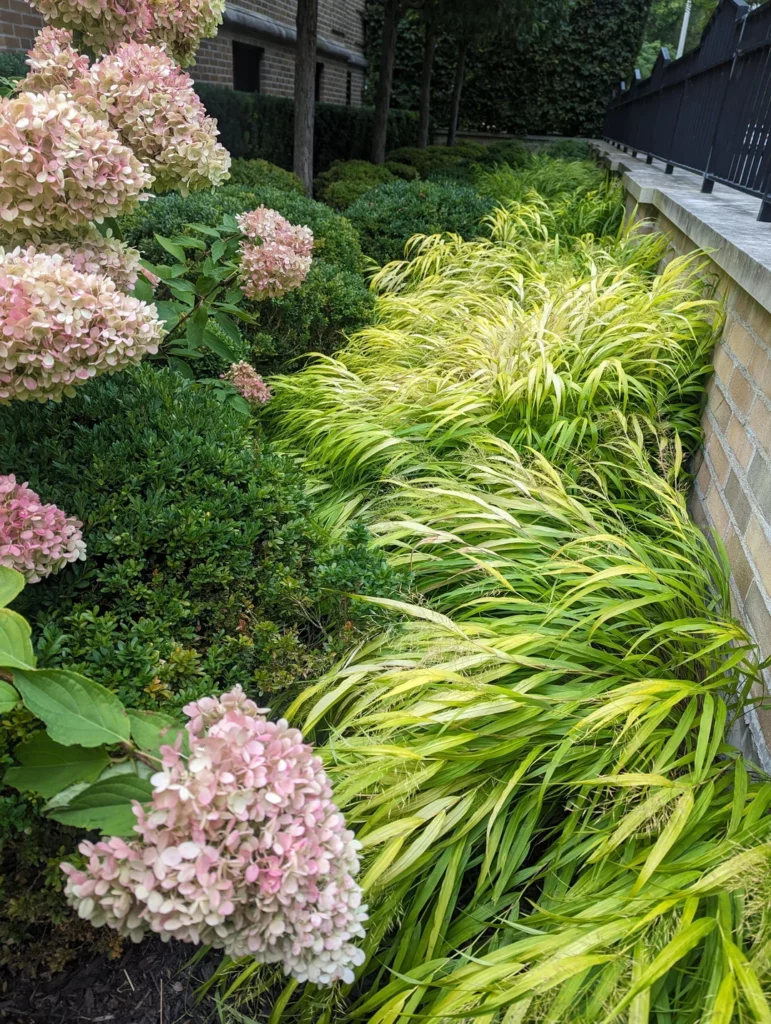Shady spots in the yard can feel like a gardening dead zone—but they don’t have to be! Some of the most beautiful, long-blooming flowers actually prefer a little less sun (and a lot less fuss).
I used to think my north-facing garden bed was hopeless—until I discovered a few shade-loving gems that totally transformed the space. From delicate groundcovers to bold, colorful blooms, there’s something for every dark corner.
Here are 40 flowers that thrive in the shadows and still steal the show.
1. Astilbe
In gardens where sunlight is scarce, the astilbe shines with its feathery plumes. This hardy perennial, known for its vibrant pink blooms, thrives in shady areas and adds a touch of elegance to any garden.
To cultivate astilbe successfully, plant it in moist, well-drained soil and ensure it receives consistent watering. Mulching around the base will help retain moisture and keep the roots cool, promoting healthy growth.
2. Bleeding Heart
Enchanting gardens often feature the bleeding heart with its delicate, heart-shaped flowers. These pink beauties dangle gracefully, bringing a romantic feel to shaded areas.
For successful growth, plant bleeding hearts in rich, well-drained soil and provide ample water, especially during dry spells. A layer of mulch will help maintain soil moisture and keep the plant thriving.
3. Hosta
Lush foliage is the hallmark of hostas, making them a popular choice for shaded gardens. With their large, textured leaves, hostas create a rich green backdrop that enhances any garden design.
To keep hostas healthy, plant them in fertile, well-drained soil and water regularly to maintain soil moisture. Protect them from slugs and snails, which can damage the leaves, by using natural deterrents.
4. Lungwort
Unique foliage and delicate blooms make lungwort a standout in any shaded garden. Its spotted leaves and blue flowers add a splash of color to darker areas.
Plant lungwort in well-drained soil with plenty of organic matter to support its growth. Ensure consistent watering, but avoid waterlogging, to keep the plant healthy and vibrant.
5. Japanese Anemone
Elegance and resilience define the Japanese anemone, known for its late-season blooms. These pink flowers sway gracefully in the breeze, bringing movement and life to shaded spots.
For optimal growth, plant Japanese anemones in well-drained soil enriched with organic matter. Regular watering will support healthy blooms, and deadheading spent flowers will encourage continuous flowering.
6. Toad Lily
Exotic beauty comes to life with the toad lily, boasting unique spotted flowers that captivate onlookers. Nestled in the shade, these lilies add an intriguing touch to any garden.
To cultivate toad lilies, plant them in humus-rich, well-drained soil and ensure they receive consistent moisture. Providing a layer of mulch will help retain moisture and keep the roots cool.
7. Foxglove
Tall and graceful, foxgloves bring a touch of the wild to shaded gardens. Their striking purple blooms stand tall, adding vertical interest and charm.
Plant foxgloves in well-drained soil with plenty of compost to nourish their growth. Regular watering and deadheading will promote prolonged blooming and prevent self-seeding.
8. Coral Bells
Colorful foliage and dainty flowers define coral bells, making them a favorite in shaded gardens. Their vibrant leaves, ranging from purple to lime green, provide year-round interest.
For thriving coral bells, plant them in well-drained soil rich in organic matter. Ensure regular watering, especially during dry periods, to maintain their vivid hues.
9. Hellebore
Winter gardens come alive with the hellebore, known for its frost-resistant blooms. These white and green flowers add elegance and life to shaded areas during colder months.
To grow hellebores, plant them in well-drained soil with plenty of organic matter. Regular watering will support their growth, and removing old leaves will promote new blooms.
10. Solomon’s Seal
Graceful arches characterize Solomon’s seal, with its white bell-shaped flowers dangling elegantly. This perennial thrives in shaded woodland settings, adding a touch of refinement.
For healthy growth, plant Solomon’s seal in rich, well-drained soil and water consistently to keep the soil moist. Mulching will help retain moisture and suppress weeds, enhancing the plant’s beauty.
11. Ferns
Lush and verdant, ferns are the epitome of shade-loving plants, providing texture and greenery. Their delicate fronds create a serene atmosphere in any garden.
To ensure ferns thrive, plant them in humus-rich, well-drained soil with consistent moisture. Providing shade and protection from harsh winds will maintain their lush appearance.
12. Brunnera
Heart-shaped leaves and tiny blue flowers make brunnera a delightful addition to shaded gardens. This perennial is known for its charming appearance and low maintenance needs.
Plant brunnera in fertile, well-drained soil with consistent moisture to support its growth. A layer of mulch will help retain soil moisture and enhance its vibrant foliage.
13. Virginia Bluebells
Clusters of blue, bell-shaped flowers characterize Virginia bluebells, bringing charm to shaded areas. These perennials create a carpet of color in spring, enchanting any garden.
To grow Virginia bluebells, plant them in moist, well-drained soil and water regularly to support their growth. Allow the foliage to die back naturally to ensure a healthy bloom the following spring.
14. Trillium
Elegance and simplicity define the trillium, with its three-petaled white flowers gracing shaded forests. This perennial adds a touch of tranquility and beauty to any garden.
For successful growth, plant trilliums in rich, well-drained soil with plenty of organic matter. Consistent moisture and protection from harsh winds will support their delicate blooms.
15. Epimedium
Delicate and charming, epimediums are perfect for shaded gardens, offering tiny blooms and heart-shaped leaves. Their subtle beauty enhances any garden with a touch of enchantment.
To cultivate epimediums, plant them in well-drained soil with ample organic matter. Regular watering and mulching will keep the soil moist and promote healthy growth.
16. Heuchera
Known for its colorful foliage, heuchera brings vibrancy to shaded garden beds. With leaves ranging from deep burgundy to bright green, it offers year-round interest and texture.
For thriving heuchera, plant it in well-drained soil rich in organic matter and water regularly to maintain its vivid colors. Mulching around the base will help retain moisture and keep the plant healthy.
17. Liriope
Grass-like foliage and striking purple flower spikes define liriope, adding texture to shaded gardens. This hardy plant is perfect for ground cover and borders, offering visual interest.
To grow liriope successfully, plant it in well-drained soil with consistent moisture. Regular watering and occasional fertilization will keep the plant lush and vibrant.
18. Aconitum
Tall spikes of deep blue flowers make aconitum a striking addition to shaded gardens. Also known as monkshood, it brings drama and elegance to any landscape.
For healthy growth, plant aconitum in fertile, well-drained soil with consistent moisture. Ensure it receives partial shade to protect it from harsh sunlight and support its blooms.
19. Lobelia
Bright blue flowers characterize lobelia, adding a splash of color to shaded garden beds. This compact plant is perfect for borders and containers, offering vibrant blooms.
To cultivate lobelia, plant it in well-drained soil with regular watering to maintain its lush appearance. Deadheading spent flowers will encourage continuous blooming throughout the season.
20. Aquilegia
Delicate spurred blooms of aquilegia create a whimsical atmosphere in shaded gardens. Also known as columbine, this plant offers a range of colors from pink to purple.
For thriving aquilegia, plant it in well-drained soil with plenty of organic matter and water regularly to support its growth. Deadheading spent blooms will encourage new flowers and prolong the blooming period.
21. Astilboides
Large leaves and small white flowers make astilboides a unique addition to shaded gardens. Its bold foliage creates a dramatic backdrop for other plants.
To grow astilboides, plant it in moist, well-drained soil with consistent watering. Mulching around the base will help retain moisture and keep the plant healthy.
22. Tiarella
Heart-shaped leaves and delicate white flowers define tiarella, a charming choice for shaded woodland gardens. Its subtle beauty enhances any landscape with grace and elegance.
For successful growth, plant tiarella in well-drained soil with consistent moisture. Mulching will help retain soil moisture and promote healthy foliage and blooms.
23. Bergenia
Large leathery leaves and pink flowers characterize bergenia, offering unique texture and color to shaded gardens. This robust plant is perfect for ground cover and edging.
To cultivate bergenia, plant it in well-drained soil with regular watering to support its growth. Removing spent flowers will encourage new blooms and maintain its attractive appearance.
24. Ajuga
Low-growing and vibrant, ajuga is perfect for adding color to shaded garden beds. Its blue-purple flower spikes create a carpet of color that enlivens any space.
For thriving ajuga, plant it in well-drained soil with consistent moisture and provide regular watering. Mulching around the base will help retain soil moisture and support healthy growth.
25. Corydalis
Fern-like foliage and delicate yellow flowers make corydalis a captivating addition to shaded gardens. Its unique appearance adds texture and color to any landscape.
To grow corydalis, plant it in well-drained soil with consistent moisture and provide regular watering. A layer of mulch will help retain soil moisture and promote healthy foliage and blooms.
26. Pulmonaria
Spotted leaves and pink and blue flowers define pulmonaria, offering a unique and colorful presence in shaded gardens. This charming plant thrives in cooler climates and adds visual interest.
For successful growth, plant pulmonaria in well-drained soil with consistent moisture. Mulching will help retain soil moisture and support its vibrant foliage and blooms.
27. Anemone
White petals with a yellow center characterize the anemone, adding elegance to shaded garden settings. These graceful flowers sway gently in the breeze, enhancing any landscape.
To cultivate anemones, plant them in well-drained soil with consistent moisture and provide regular watering. Deadheading spent flowers will encourage new blooms and prolong the blooming period.
28. Bishop’s Hat
Small flowers and heart-shaped leaves characterize Bishop’s Hat, adding whimsy to shaded woodland gardens. This plant’s delicate appearance enhances any landscape with grace and charm.
To grow Bishop’s Hat, plant it in well-drained soil with consistent moisture and provide regular watering. A layer of mulch will help retain soil moisture and promote healthy foliage and blooms.
29. Campanula
Bell-shaped blue flowers make campanula a delightful addition to shaded gardens. This charming plant offers a touch of elegance and color to any landscape.
For successful growth, plant campanula in well-drained soil with consistent moisture and provide regular watering. Deadheading spent flowers will encourage new blooms and prolong the blooming period.
30. Fuchsia
Hanging red and purple flowers characterize fuchsia, bringing vibrant color to shaded garden areas. This plant’s unique blooms create a stunning visual display in any landscape.
To cultivate fuchsia, plant it in well-drained soil with consistent moisture and provide regular watering. Pinching back spent blooms will encourage bushier growth and prolong the blooming period.
31. Hardy Geranium
Pink flowers and lobed leaves define hardy geraniums, offering a colorful addition to shaded garden beds. These resilient perennials bring charm and beauty to any landscape.
To grow hardy geraniums, plant them in well-drained soil with regular watering to support their growth. Deadheading spent flowers will encourage new blooms and maintain their attractive appearance.
32. Lily of the Valley
Small white bell-shaped flowers characterize Lily of the Valley, adding a touch of elegance to shaded woodland gardens. These fragrant blooms create a carpet of beauty and enchantment.
For thriving Lily of the Valley, plant it in well-drained soil with consistent moisture and provide regular watering. Mulching around the base will help retain soil moisture and support healthy growth.
33. Vinca
Glossy leaves and purple flowers make vinca a popular option for shaded gardens. This hardy plant provides ground cover and vibrant color throughout the growing season.
To cultivate vinca, plant it in well-drained soil with consistent moisture and provide regular watering. A layer of mulch will help retain soil moisture and promote healthy foliage and blooms.
34. Snowdrop
Small white blooms characterize the snowdrop, bringing a touch of purity to shaded garden settings. These delicate flowers emerge early in the season, offering a glimpse of spring.
To grow snowdrops, plant them in well-drained soil with consistent moisture and provide regular watering. Allow the foliage to die back naturally to ensure a healthy bloom the following spring.
35. Columbine
Graceful and airy, columbine offers intricate blooms that seem to float above its delicate foliage. With colors ranging from deep violet to pale pink, it brings whimsical beauty to shady garden spots.
To grow columbine successfully, plant it in well-drained soil rich in organic matter and water regularly to support its growth. Deadheading spent flowers will encourage additional blooming and help maintain its graceful appearance.
36. Leopard Plant
Broad, glossy leaves and bright yellow daisy-like blooms define the leopard plant, making it a standout in shaded gardens. Its dramatic foliage adds bold texture and contrast to darker areas.
For thriving leopard plants, plant them in consistently moist, well-drained soil and protect them from hot afternoon sun. Mulching around the base will help retain moisture and support the plant’s lush growth.
37. Bugbane
With tall spires of white or pinkish flowers, bugbane brings elegance and vertical interest to shaded gardens. Its deeply cut foliage adds texture, while the fragrant blooms attract pollinators late in the season.
To grow bugbane successfully, plant it in moist, well-drained soil rich in organic matter. Ensure consistent watering and protect it from strong winds to maintain its upright form and flowering potential.
38. Foamflower
Foamflower charms with its frothy, star-shaped blossoms and attractive lobed leaves. This ground cover thrives in shady spots, creating a soft, floral carpet that brightens woodland gardens.
For thriving foamflower, plant it in humus-rich, well-drained soil and maintain consistent moisture. Mulching around the base will support healthy foliage and extend blooming into late spring.
39. Saxifraga Fortunei
If your shade garden is missing a gentle splash of late-season charm, Saxifraga fortunei is worth a spot. This plant stays fairly low but produces delicate starry flowers—often white, pink, or even lightly flushed with red—just when many other plants are winding down.
It prefers moist, well-drained soil and does best in partial to deep shade, making it a lovely fit for woodland borders or tucked under shrubs. The foliage is attractive too—rounded and slightly fleshy, often with a bit of bronze or burgundy depending on the variety.
Look for cultivars like ‘Blackberry and Apple Pie’ if you want a more dramatic leaf-and-bloom combo. Bonus: it’s won the RHS Award of Garden Merit, so it’s not just pretty—it’s dependable too.
40. Japanese Forest Grass
Graceful and flowing, Japanese forest grass brings a soft, cascading texture to shaded garden beds. Known for its arching blades and golden-green hues, this ornamental grass brightens darker corners with its subtle shimmer.
To grow Japanese forest grass successfully, plant it in moist, well-drained soil enriched with organic matter.
Keep the soil consistently damp, especially during dry spells, and provide a layer of mulch to retain moisture and suppress weeds. Though slow-growing, this elegant grass rewards patience with year-round interest and movement.

